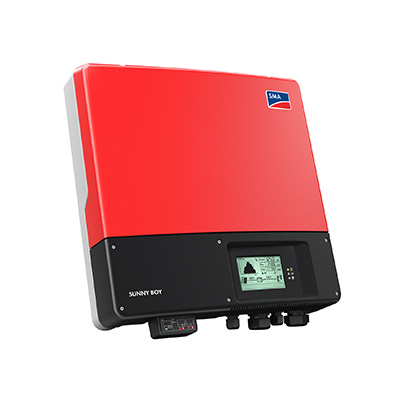Grid Tie Inverters
By Finn Peacock, Chartered Electrical Engineer, Fact Checked By Ronald Brakels
Most solar systems installed today are connected to the national electricity grid. And for good reason. The electricity grid can be thought of as an enormous and very cheap battery. When your solar power system generates more than your home can use, the grid will take your excess electricity. When you need more electricity than your solar panels can generate, the grid will happily top you up with all the electricity you need.
Grid connected solar systems need grid tie inverters. These are special solar inverters that will synchronise with the electricity grid. They produce grid compatible 240V AC (sinewave) electricity from the DC voltage that your panels produce. The electricity from a grid tie inverter is indistinguishable from the grid’s electricity. In fact, often it’s actually better quality power than the grid’s!
Here’s what a grid-tie inverter looks like in case you haven’t seen one before:
What is special about a grid tie inverter?
A grid tie inverter produces sinewave AC electricity that matches the voltage and frequency of the grid exactly. Did you know that the grid’s voltage and frequency varies considerably from day to day? This means that your grid tie inverter actually has to monitor the actual grid frequency and voltage and then adjust its output to match the grid’s imperfect waveform at any given time.
This allows the inverter to feed electricity back into the grid, which exactly matches the electricity being delivered by the utilities.
What causes a grid tie inverter to shut down?
Most grid tie inverters will shut down if the grid goes down, and they will also shut down if the grid’s frequency or voltage gets too high or too low, such that they are outside of the inverter’s operating limits.
This is a lot more likely to happen if you live near the end of a transmission line or near a factory that draws lots of electricity and hasn’t invested in good power factor correction equipment.
If this does happen, the inverter may, depending on the model, either switch back on automatically when the power quality improves, or if it is a really cheap and nasty inverter, require a manual restart.
Where in your home can you install a grid tie inverter?
Every grid tied inverter you can buy will have an Ingress Protection (IP) rating.
This number tells you how well sealed the inverter is and where it can be installed:
IP21 – Indoor use only
IP42 – can be installed outside but must be covered and enclosed.
IP65 – can be installed outside, uncovered
The best place to put your inverter is in a cool garage. The worst place to install a solar inverter is in direct sunlight, as high temperatures will reduce the lifespan of your inverter considerably and also reduce its efficiency.
Ideally your grid tied inverter will be as close as possible to the meter box, but your top priority should always be to have it in a cool place. If that means that your inverter is a long way from the meter then so be it. You just need to ensure that your installer uses extra thick cable to connect the inverter to the grid. The thicker the cable, the lower the resistance, and the lower the power losses. If your grid tie inverter is more than a few meters away from your electricity meter, then insist on a cable size that reduces power losses in the AC cable to less than 1%. If you want to know more about this issue I’ve written a blog post where I talk about wire thicknesses and inverters in a lot more detail.
